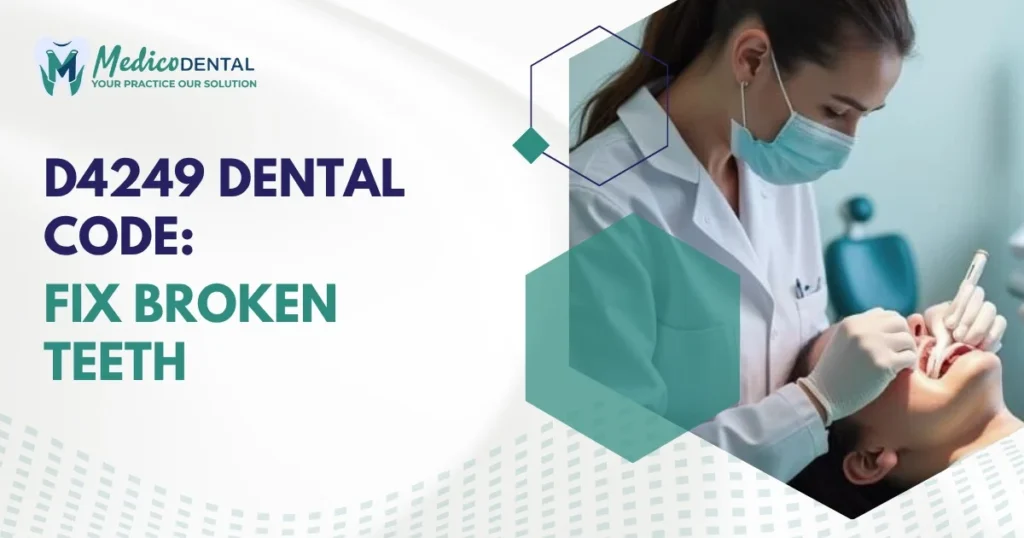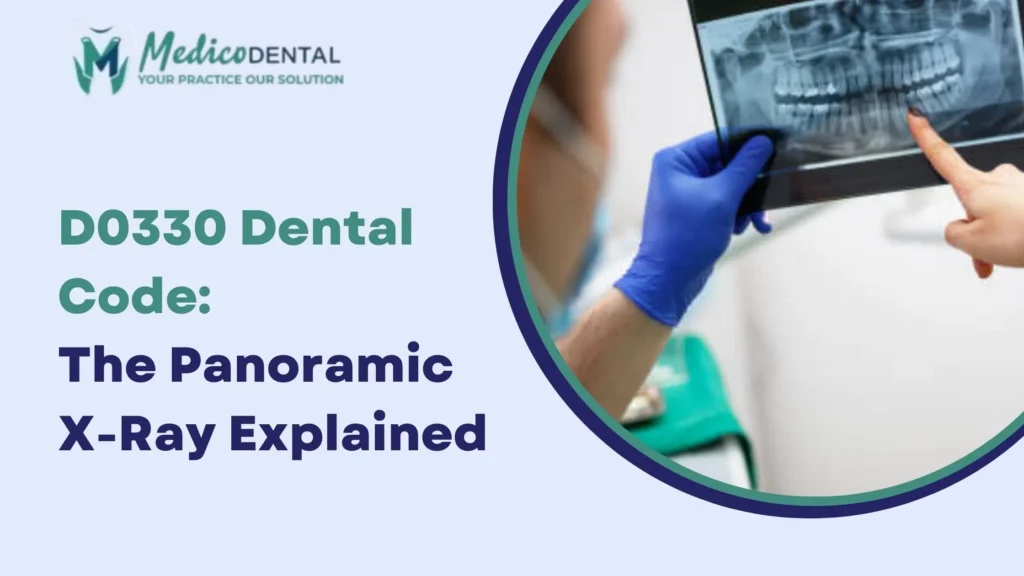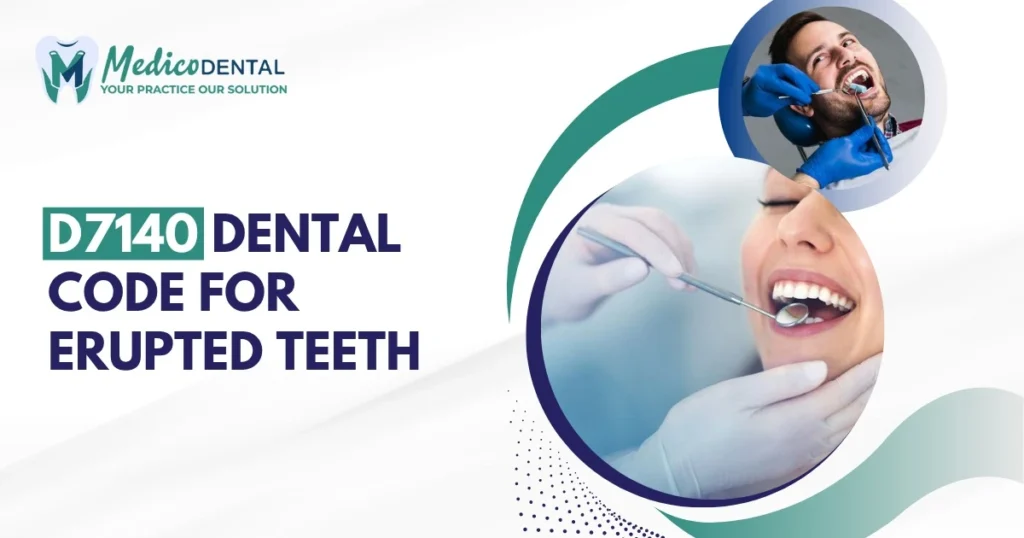The D4249 dental code is associated with a crucial dental procedure known as clinical crown lengthening, specifically involving the removal of hard tissue (bone) to expose more of a tooth’s structure. This procedure is often required when a tooth lacks sufficient visible structure to support restorative treatments like crowns, bridges, or fillings. D4249 is typically utilized for broken teeth, receding gums, or damaged teeth caused by periodontal disease. By removing surrounding bone, the procedure allows for better access and provides the necessary support for successful restorations.
What is the D4249 Dental Code?
The D4249 dental code refers to a clinical crown lengthening procedure, which involves the surgical removal of bone around a tooth to expose more of the tooth structure. This procedure is typically performed when there is not enough visible tooth material to place a restorative device like a crown or bridge. By increasing the exposed area of the tooth, this procedure ensures a better foundation for restorative work.
Importance of Clinical Crown Lengthening for Broken Teeth
When a tooth breaks or becomes severely worn down, there may not be enough remaining structure to support a crown or other restorative procedure. Clinical crown lengthening using the D4249 code addresses this issue by removing the bone surrounding the tooth, exposing more of the tooth structure to allow for secure and long lasting restoration. This procedure ensures that the tooth can be properly treated and protected from further damage.
Understanding D4249 Dental Code
Definition and Overview of D4249
D4249 refers to clinical crown lengthening involving hard tissue removal to expose more of a tooth’s structure for restorative procedures. This step is necessary when there is insufficient tooth material to support a crown or bridge. The procedure is typically used for broken teeth or when gum recession or periodontal disease has left the tooth without enough visible structure for proper restoration.
When is D4249 Used in Dental Procedures?
D4249 is used when a tooth has insufficient exposed structure to support a restoration like a crown or bridge. It’s often performed when a tooth is broken, or the gums have receded, exposing the root. In cases where periodontal disease has caused bone loss, this procedure can help restore enough tooth material for effective treatment, making it possible to secure long term dental restorations.
The Procedure: Fixing Broken Teeth with D4249
Step by Step Process of Clinical Crown Lengthening
The D4249 procedure is a surgical process that ensures enough tooth structure is exposed for a secure restoration. The procedure includes several key steps:
Anesthesia and Flap Reflection
The procedure begins with the application of local anesthesia to numb the area around the tooth. Once the area is fully numbed, the dentist reflects (or lifts) the gum tissue to access the underlying bone surrounding the tooth. This is done to expose the bone that needs to be removed.
Bone Removal for Tooth Exposure
Next, the dentist carefully removes the necessary bone around the tooth to expose more of the tooth structure. The amount of bone removed depends on the extent of the tooth’s damage or the need for restorative work. This step ensures that enough of the tooth is visible for effective treatment, such as placing a crown or bridge.
Closing the Area: Suturing and Healing
After the required bone is removed, the dentist repositions the gum tissue and sutures it back into place. The area is left to heal for a period, allowing the bone and gums to settle before any restorative work is performed. Healing time is important to ensure that the exposed tooth structure remains stable for the restoration.
Indications for Using D4249
Insufficient Tooth Structure for Restorative Work
One of the primary reasons for using D4249 is when there is not enough tooth structure remaining to support a crown or bridge. If a tooth is severely broken or decayed, the remaining surface area may be insufficient for securing a restorative device. D4249 addresses this issue by removing bone around the tooth to expose more of its structure, allowing for proper restoration.
Gum Recession and Root Exposure
When gums recede, the roots of the teeth can become exposed, making it difficult to restore the tooth. D4249 can help by removing bone around the tooth to expose more of its surface, ensuring the tooth has enough material to support a crown or other restoration. This is crucial for both cosmetic and functional reasons.
Impact of Periodontal Disease on Tooth Structure
Periodontal disease can lead to bone loss around the teeth, weakening their structure and making them vulnerable to damage. In these cases, D4249 helps by removing the affected bone to expose more of the tooth, allowing the dentist to perform restorative work and prevent further issues. This procedure ensures that the tooth is properly supported and protected.
D4249 vs. D4230: Understanding the Difference
Clinical Crown Lengthening Hard Tissue vs. Soft Tissue
When it comes to crown lengthening procedures, there are two main approaches: hard tissue and soft tissue removal. Both are designed to expose more of the tooth structure for restorative work, but they differ in terms of what is removed and the technique used.
D4249 (Hard Tissue)
This procedure involves the removal of bone around the tooth to expose more of the tooth’s structure. It’s typically required when the tooth is severely broken or the surrounding bone has been lost due to disease or decay. This technique is more invasive and requires precise bone removal.
D4230 (Soft Tissue)
Unlike D4249, D4230 involves removing gum tissue (rather than bone) to expose more of the tooth’s surface. It is usually performed when the gums have receded, but the underlying bone structure is still intact. This is a less invasive procedure, focusing on reshaping the gum line.
Both procedures are crucial for preparing the tooth for crowns or other restorative work, but the choice between hard or soft tissue removal depends on the severity of the case and the condition of the tooth and gums.
Insurance and Billing for D4249
How D4249 is Billed in Dental Practices
The D4249 procedure is typically classified as a surgical procedure and is billed accordingly. In most dental practices, this procedure is billed under surgical codes due to its invasive nature, which involves both the removal of bone and repositioning of gum tissue. The cost of the procedure will vary depending on the complexity, the dentist’s location, and the time required to complete the procedure. When Dental billing, the dentist should include a detailed description of the procedure and the amount of bone removed, as well as any post operative care instructions.
Insurance Coverage for Crown Lengthening Procedures
Insurance coverage for crown lengthening, including procedures like D4249, can vary. Some insurance providers may cover the procedure under periodontal surgery benefits, while others may classify it as an elective procedure, especially if it’s performed for cosmetic purposes. Coverage typically depends on whether the procedure is deemed medically necessary (such as for broken teeth or severe gum recession) or if it’s purely for aesthetic reasons.
To avoid surprises, it’s important for patients to consult with their insurance provider ahead of time to understand what’s covered and what isn’t. Some providers may also require a pre authorization before proceeding with the treatment.
Common Billing Challenges and Solutions
Challenge 1: Insufficient Documentation
One of the most common issues in billing for D4249 is inadequate documentation. Insurance companies often require detailed descriptions of the procedure, including why it was necessary and how much bone was removed. It’s essential that the dentist provides a complete record to prevent claim denials.
Solution
Dentists should take extra care to document every step of the procedure and the reasons behind choosing D4249. This includes notes on the tooth’s condition, the amount of bone removed, and any post operative care.
Challenge 2: Coverage Variability
Coverage for D4249 can vary widely between insurance providers and plans. This can cause confusion for patients when they are billed for the procedure, especially if they weren’t fully aware of their insurance policy’s terms.
Solution
To avoid confusion, patients should confirm their coverage before scheduling the procedure. Dental offices can also work directly with insurance companies to clarify coverage and get pre authorization if necessary.
Post Procedure Care and Considerations
Healing Time and Waiting Period Before Restorative Work
After the D4249 procedure, it’s crucial to give the area time to heal. The healing process typically takes several weeks, as the bone and gum tissue need to settle and stabilize. During this period, patients are advised to follow proper post operative care instructions, which may include using ice packs, taking prescribed pain medications, and avoiding hard foods that could disrupt the healing area.
Once the area has healed sufficiently, usually after 4 to 6 weeks, the dentist will assess the tooth and surrounding tissue to determine if it’s ready for restorative work. This may include placing a crown or bridge, depending on the extent of the tooth’s damage.
What to Expect After a D4249 Procedure
Following D4249, patients can expect some swelling, discomfort, and possibly minor bleeding in the treated area. These symptoms are normal and should subside within a few days. Over the counter pain relievers can be used to manage discomfort, and the dentist may prescribe antibiotics if there’s a risk of infection.
Patients should also avoid vigorous physical activities that could disrupt the healing process, and follow up with their dentist for a post surgical check up. Maintaining proper OMS hygiene is crucial during the recovery period to prevent complications and ensure proper healing.
Summary
The D4249 procedure is vital for restoring broken or damaged teeth, particularly when there is insufficient exposed tooth structure for traditional restorative treatments. By removing surrounding bone, the dentist can expose more of the tooth, ensuring a secure foundation for crowns or bridges. This procedure helps prevent further tooth damage and restores both function and appearance.
Crown lengthening with D4249 is a highly effective solution for teeth that require additional structure for restorative work. Whether due to gum recession, broken teeth, or periodontal disease, this procedure provides the necessary foundation for long lasting dental repairs. If you’re considering crown lengthening, it’s important to consult with your dentist about the procedure’s benefits, recovery, and insurance coverage to ensure the best outcome for your dental health.
FAQs
Can D4249 Be Used for All Types of Broken Teeth?
Ans. D4249 is commonly used for teeth that are broken or worn down to the point where there is insufficient structure to support a crown or bridge. However, it is not suitable for every case of tooth damage. The procedure is typically used when the tooth has enough remaining structure but requires more exposure for restoration. If the tooth is severely fractured or decayed beyond repair, other procedures may be necessary.
How Long Does Recovery Take After D4249?
Ans. Recovery time after D4249 varies from person to person, but typically, the area requires 4 to 6 weeks to heal. During this time, the bone and gum tissue need to stabilize before the dentist can proceed with placing a restoration. Patients may experience swelling and discomfort during the first few days, but these symptoms should subside within a week.
Is D4249 Covered by Insurance?
Ans. Whether D4249 is covered by insurance depends on the specific insurance plan and whether the procedure is deemed medically necessary. Some insurance providers cover crown lengthening when it’s necessary for functional restoration, while others may exclude coverage for cosmetic reasons. It’s important to verify insurance coverage before proceeding with the procedure to avoid unexpected costs.



